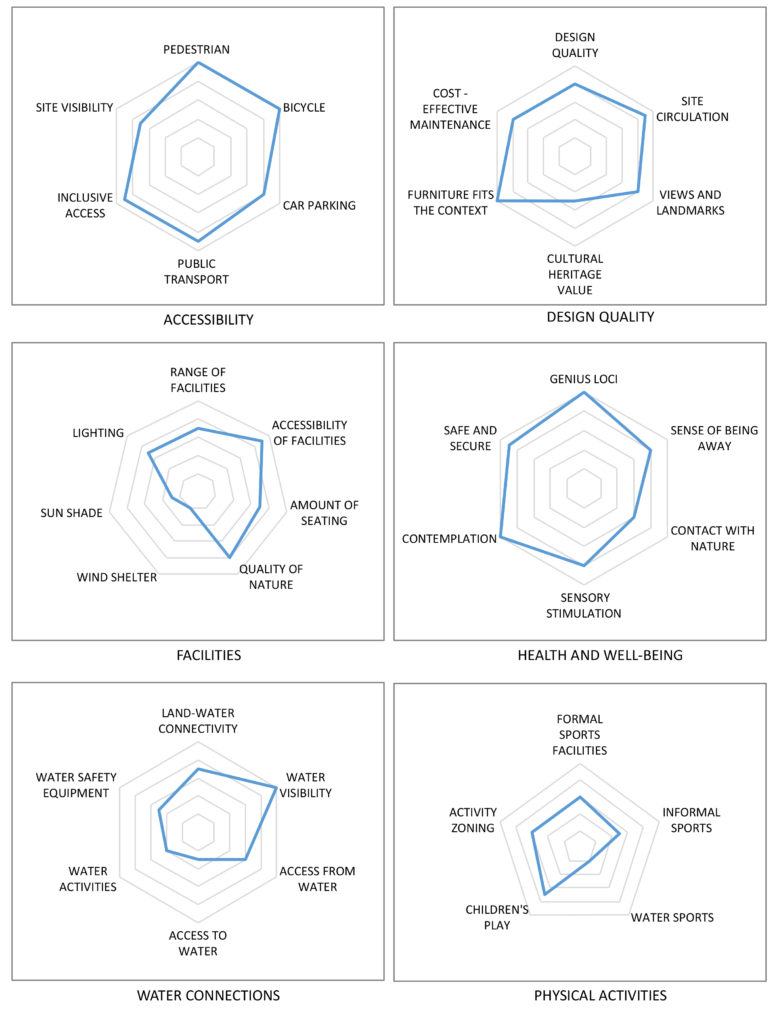
Architect
Isthmus Group LTD. and Richard Bain
Type of Area
Sea
Land/water interaction
Promenade
Ripraps
Terrace/steps
Built Environment Types
Highly built
Low green
Scale of Impact
Block
District/ neighbourhood
City
Intervention Scale (Spatial)
Linear development – multiple interventions
Project Types
Seafront development
Outdoor Recreation
Urban/ Rural
Inner urban area
Visibility and Openness
Fully open
Full horizon
The Wild Tasman Coastline.
In 1995 Isthmus Group was engaged to develop a design-led Master plan of New Plymouth and explore the physical and visual link between the city and the forgotten waterfront. The projects ties a series of linear spaces along the coast through a Coastal walkway which follows the foreshore for six km. A number of cantilevered platforms have been built to offer excellent unrestricted views over the wild Tasman Sea. The foreshore development extends the city green spaces across the arterial roads and railway line to terminate at finger piers facing out over the ocean.
This uncompromising design respects the robust character of the shoreline that bears the brunt of the prevailing weather by using a pallet of materials designed to bear the brunt of the wind and the wild sea. Thus, cantilever platforms were planned to withstand huge waves, while at the same time they allow visitors to be close to the sea. The promenade consists of a concrete and wooden board walk with massive concrete panels used to armour the fragile cliff.
The coastal walk connects inland to the city streets at many points and extends the existing city grid across the arterial road and provides a safe railway line crossing point right to the sea edge. It is perfect for prams, bikes and skateboards, and for running, walking, cycling, scooting or skating along the walkway. There are also places to sit and contemplate. In addition, the place provides picnic areas, playgrounds and toilets for visitors’ convenience. However, due to its popularity there are increased pressures from the competing activities.
Art was introduced into the development the project and local artist were involved to build sculptures at strategic points as significant landmarks. The Len Lye ‘Wind Wand’ sculpture is one such popular feature. The popularity of the various elements in the design has been a catalyst for regeneration of the area.
Perception and Meaning
Place identity
Imageability
Sense of place
Legibility
Accessibility
Health and Wellbeing
Restorativeness
Aesthetic experience
Place affordance
Increases socialisation
Increased physical activities
Interaction with Water
Visual
Tactile – touching

The unobstructed and clean surface for the promenade ensures that the accessibility of the development is high. The site visibility of the development is understandably low due to the linearity of the construction and its proximity to the city centre. Overall the design quality is good reflecting the robust character of the materials used to withstand the wild nature of the sea in that area. Although it was built to reconnect the city to the foreshore and reversing the trend of the city turning its back on the sea, the modernistic construction of the pathways connects less well to its more organic form in the past.
Protection from the sun and wind in this particular development is low, again reflecting the rugged and exposed nature of the coastline in this area; instead it links people to the wildness of the sea. The health and well-being benefits of the development are generally excellent, although due to the use of concrete and stone, contact with nature is low. The proximity of the city also reduces the sense of being away. Safety railing at critical points and observation decks with handrails and a protective fence ensure the safety of users and low lights offer clear visibility of the path surface.
The rough nature of the sea in this area limits the possible contact with water, although the riprap boulder edging does invite a degree of children’s play. The linearity of the development also restricts its use for more formal sporting activities. However, the development has achieved its fundamental aim of increasing the visibility of the sea.
